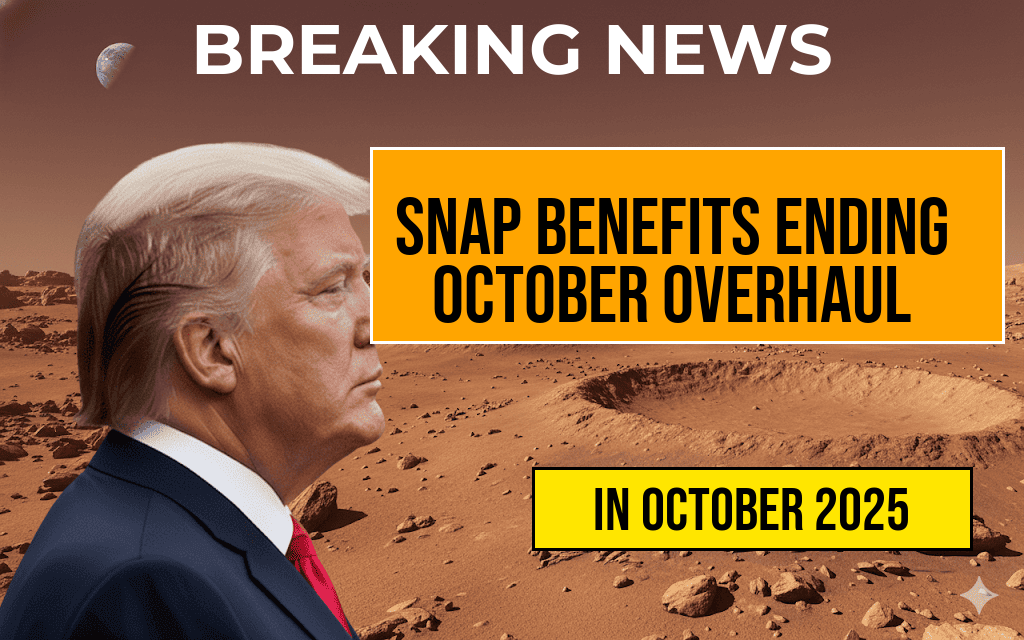The U.S. Department of Agriculture (USDA) has announced the upcoming elimination of Supplemental Nutrition Assistance Program (SNAP) benefits through the “Cashing In” initiative, effective starting October. This overhaul marks a significant shift in federal assistance policies, ending a program that allowed recipients to convert benefits into cash or purchase gift cards for wider use. The move has sparked concerns among advocacy groups and recipients, who argue it could limit access to essential funds and hinder efforts to promote self-sufficiency. The decision aligns with broader efforts to streamline welfare programs and reduce potential misuse, but critics warn it may disproportionately impact low-income households relying on SNAP for basic needs.
Background on the “Cashing In” Program
Launched in 2018, the “Cashing In” initiative was designed to provide SNAP recipients with more flexible options for using their benefits. Under the program, qualified individuals could convert their monthly SNAP benefits into cash or gift cards, enabling purchases at a wider array of stores and services beyond authorized retailers. The goal was to empower recipients with greater financial autonomy and reduce the stigma associated with SNAP usage.
However, the program faced scrutiny over concerns that it could facilitate misuse or fraud. Critics argued that allowing cash conversions might increase the risk of funds being diverted for non-essential or illicit activities. Despite these concerns, supporters maintained that the initiative helped recipients manage their finances more effectively and improved overall program engagement.
Details of the October Overhaul
Effective October 1, the USDA will terminate the “Cashing In” option for all SNAP beneficiaries nationwide. The overhaul will revert benefits to their original form—electronic benefits transferred directly to recipients’ EBT cards, usable only at authorized grocery stores and retailers. This policy shift aims to tighten oversight and reduce potential abuse, according to USDA officials.
| Feature | Pre-October 2023 (“Cashing In” Available) | Post-October 2023 (No Cashing In) |
|---|---|---|
| Benefit Conversion | Eligible for cash or gift card conversion | Benefits remain digital EBT funds only |
| Usage Flexibility | Wider purchasing options, including some non-food items (depending on state rules) | Limited to authorized retailers for food and approved items |
| Oversight | Potential for misuse or diversion | Reduced risk of fraud or misuse |
Impacts on Recipients and Advocates
Many recipients expressed concern over the elimination of the “Cashing In” option, citing the need for flexible access to cash in emergencies or for essential services not covered by SNAP. Social service organizations warn that the change could increase financial hardship for vulnerable populations, especially those living in rural or underserved areas where access to traditional retail outlets is limited.
- Financial Flexibility: Recipients who relied on converting benefits into cash may face difficulties managing their budgets.
- Emergency Funds: Without cash conversion, families may struggle to cover urgent expenses like rent, utilities, or transportation.
- Potential for Increased Hardship: Critics argue the policy could lead to increased food insecurity and financial instability among low-income households.
The USDA maintains that the change will improve program integrity and reduce fraud, aligning with efforts to ensure taxpayer funds are used appropriately. Officials also note that alternative resources and local assistance programs remain available for those in need of additional support.
Policy Rationale and Broader Context
The decision to end the “Cashing In” program reflects a broader trend toward tightening eligibility and usage rules across welfare initiatives. Federal policymakers emphasize the importance of safeguarding public funds and ensuring assistance reaches intended beneficiaries. The move aligns with recent legislative efforts aimed at reducing abuse and streamlining federal aid programs, which have faced bipartisan support.
However, critics argue that these policies risk creating barriers for those most in need. Studies indicate that flexibility in how benefits are used can improve recipients’ capacity to manage their finances and transition toward self-sufficiency. Organizations such as the USDA and welfare advocates continue to debate the best ways to balance oversight with compassion.
Next Steps and Community Response
As the October deadline approaches, community organizations are mobilizing to inform recipients about the changes and provide guidance on alternative assistance options. Some local agencies are ramping up outreach to ensure that vulnerable households understand how to access emergency resources or financial counseling services.
While the USDA emphasizes that the policy shift aims to protect the integrity of SNAP, ongoing discussions highlight the need for comprehensive support systems that address both oversight and the realities faced by low-income families.
For more information on SNAP benefits and recent policy updates, visit the official USDA SNAP eligibility page or consult local social service agencies.
Frequently Asked Questions
Question
What is the main change to the Snap Benefits program starting in October?
Question
Why are Snap Benefits being eliminated in the upcoming program overhaul?
Question
How will the cashing in process for Snap Benefits change after October?
Question
Who will be affected by the elimination of Snap Benefits in the new program?
Question
Are there any alternatives or assistance programs available for Snap Benefit recipients after the overhaul?

Leave a Reply